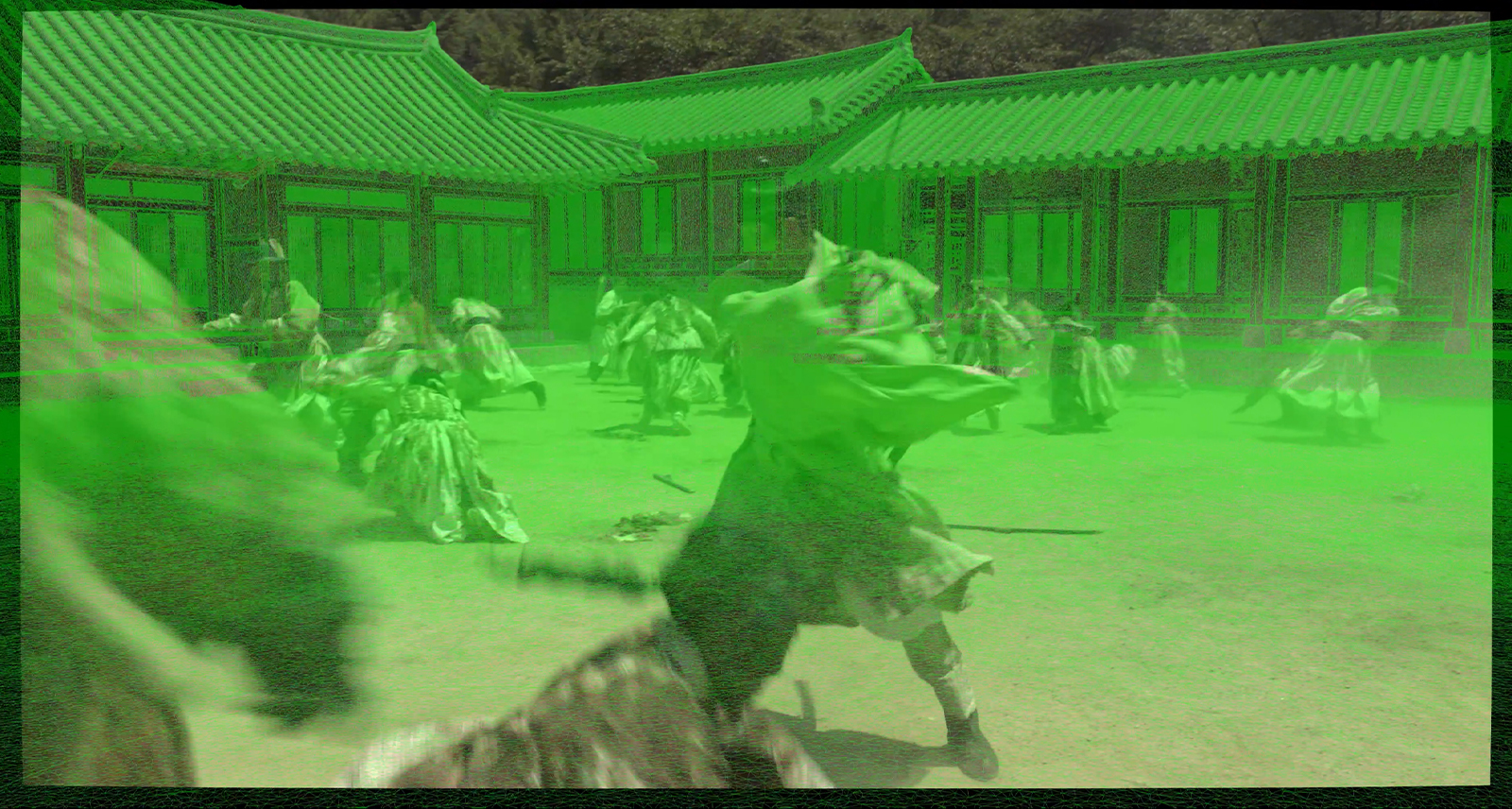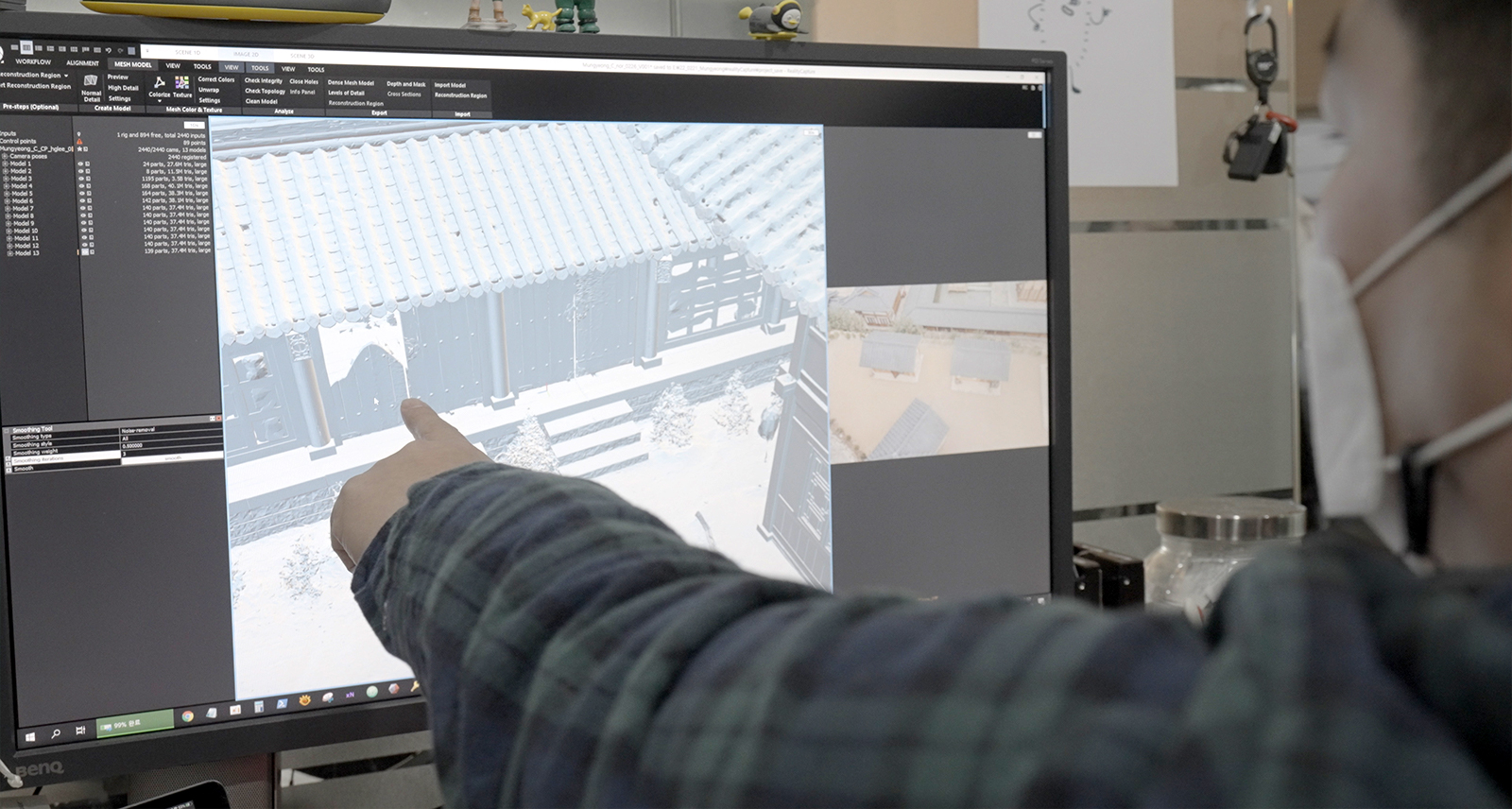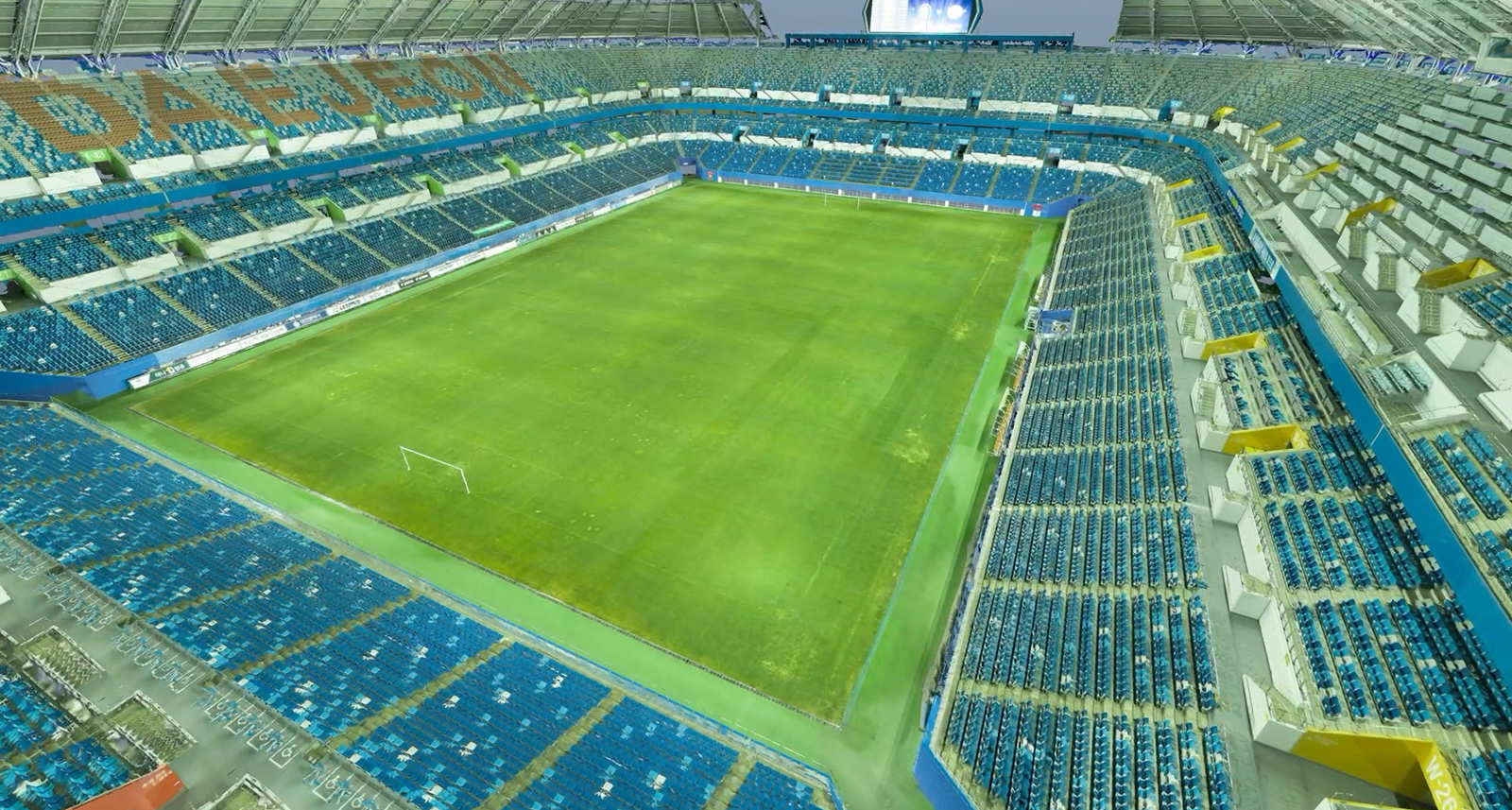Scanning Sets for Hit Series: 3D Laser Scanning in the VFX Industry
Case study

Author:Megan Hansen
Films and television series often make physically impossible environments a visual reality to bring fantastical feats and stories to life. These entertaining productions depend on teams of visual effects (VFX) specialists who use a technique called Matchmove to seamlessly merge live action film footage with computer-generated but realistic imagery.
South Korea’s 75mm Studio Co., Ltd. (75mm), a leading VFX company specialising in Matchmove and on-set data captures for the film, television, and gaming industries, uses 3D laser scanning to create digital surveys of sets, essential for applying visual effects to live-action sequences. Using the Leica RTC360 3D laser scanner, 75mm can collect high-quality survey data quickly and efficiently, even in difficult circumstances — like on the set of the 2021 Netflix international hit series, Squid Game.
Beyond success with Matchmove, incorporating 3D laser scanning solutions from Leica Geosystems, part of Hexagon, has enabled 75mm to optimise and expand their use of point cloud data, opening new service offerings for video game development, historical and cultural site documentation, digital twin creation and more.
Merging the virtual and reality: 3D laser scanning and VFX
Since adding Leica Geosystems 3D laser scanning technology in 2019, 75mm’s digital background assets and set surveys have been used on many productions, including the Netflix series Squid Game and Kingdom and the Korean tvN drama series, Jirisan. Additionally, they have contributed to commercials like the Samsung Galaxy Z Flip3 music video, using meshes and textures acquired with LiDAR to help place footage of Korean pop band, BTS, into a digital model of a technicolour gymnasium.
“There are various ways to utilise LiDAR scans in VFX,” explains Cholho Shin, CEO of 75mm. “For example, to fill up an empty auditorium or stadium with digital characters or to create a scene with a dangerous car chase in a tunnel. We consider the safety of the actors by filming the scene on set and adding the tunnel scan data after.”
From early pre-production through post-processing, 75mm uses 3D laser scanning to provide VFX services across the film production pipeline. For pre-production, they capture and deliver scanned survey data of sets to enhance pre-visual directing and scene preparation. During filming, they provide the survey data to production and set teams and offer computer graphics supervision.
“We use survey data with high resolution imagery to add background assets to virtual sets,” describes Shin. “Additionally, scan data from set locations serves as a great help for live filming.”
Through Matchmove work in post-production, 75mm delivers a base layout for computer graphics. “We process Matchmove work by utilising high quality on-set data of the scene and attaching it to the 3D tracked scene,” explains Shin.
75mm uses captured survey data from sets to accurately match the geometry of live action frames and digital environments. This enables VFX specialists to merge live action footage filmed with 3D cameras into virtual environments where they can build computer generated imagery into scenes while ensuring action continuity and enhancing realism.
Easy integration and enhanced output with LiDAR scanning solutions
75mm uses the Leica RTC360 3D laser scanner and Leica Cyclone REGISTER 360 software to create high-quality point clouds and digital models for their Matchmove work.
The RTC360, equipped with LiDAR, a Visual Inertial System (VIS) and high-dynamic range (HDR) imaging, scans two million points per second and captures 360-degree HDR images to generate optimal point cloud results ready for registration. With Cyclone REGISTER 360, users across skill levels can successfully align and georeference point clouds, speeding up post-processing for a faster field-to-finish workflow.
“The biggest reason we chose the RTC360 was its VIS function and the simplicity of the settings, which makes it easy to work on registration even without expert knowledge” explains Shin. “This allows us to collect stable data consistently and manage it efficiently in the field.”
The RTC360’s ease of use meant that the 75mm team could quickly incorporate the technology into their projects collecting set survey data.
“Since its basic functionality is great, we were able to begin using the RTC360 after a month of training and, within six months, we were acquiring the high-quality data,” says Shin.
Highly portable and fast, the RTC360 improves the data capture workflow on sets where the 75mm team needs to work quickly or scan difficult to reach locations.
“We normally don’t have enough time on real sets for acquisitions, and we have to consider the condition of the filming location, which can pose problems. However, thanks to the RTC360, we avoid risks in the field,” Shin describes.
“VIS processing creates 3D point clouds generated from HDR images and this feature allows the scanning process at filming locations to be done quickly with great precision and simple usability. It proves a great help in our VFX work,” Shin continues.
Scanning sets for hit series
In two recent Netflix series releases, 75mm used set survey scan data to build digital foundations for visually stunning scenes.
For Squid Game, a Golden Globe nominated survival drama, 75mm completed several 3D laser scans of sets for high-precision Matchmove work. One set featured a maze-like cascade of multicolour stairways with complex patterns and textures. The high-accuracy data required to capture the set effectively was only possible with LiDAR scanning, making the RTC360 the perfect instrument for the job. The amount of point clouds captured from the intricate set was massive, and 75mm optimised the vast mesh so the film team could easily use the survey data.
They also helped capture set data for a scene of life-or-death tug-of-war by scanning a large set with raised platforms. After the actors filmed the scene against a blue screen background with each “team” standing on opposing platforms, 75mm applied their expert Matchmove work and visual effects to complete the perception that the game’s losers fell from great heights to their demise.
75mm also scanned sets for Netflix’s Kingdom, a period horror thriller set in 16th century Korea. They captured locations in the Mungyeong Saejae Provincial Park in central South Korea, a scenic mountain pass area with well-preserved historical buildings and an open set for filming. Later, live action footage was merged with the set survey data to create a seamlessly integrated battle scene.
Expanding business opportunities with captured assets
3D laser scanning at historical sites like this and other set locations has not only provided 75mm with survey data for their Matchmove work but has also helped them to form plans and focus research for where reality capture technology will take their business in the future.
“Currently, many VFX companies in Korea are planning additional business content through collaboration with our technology and solutions. We are also making efforts to distribute our data to the Korean Federation of Film Archives and the Korean Film Council,” says Shin.
“Additionally, and due to COVID-19, we are considering alternative filming approaches, producing data so that actors don’t actually need to visit locations in foreign countries,” Shin describes.
75mm’s plans for 3D laser scanning extend outside of the VFX industry as well.
“We are researching how we can use the data in different ways,” says Shin. “For example, LiDAR data can also be used to document historical locations and cultural heritage sites for digital exhibitions, and to create digital assets, like digital twins, for future industries and the metaverse. We are also focusing on optimising the data size and texture while maintaining quality for game engines and augmented reality applications.”
“Through Leica Geosystems’ solution, we have been able to approach LiDAR equipment easily. The speed, convenience and accuracy of the RTC360 means we are able to use it efficiently within and to expand our VFX business,” concludes Shin.





























